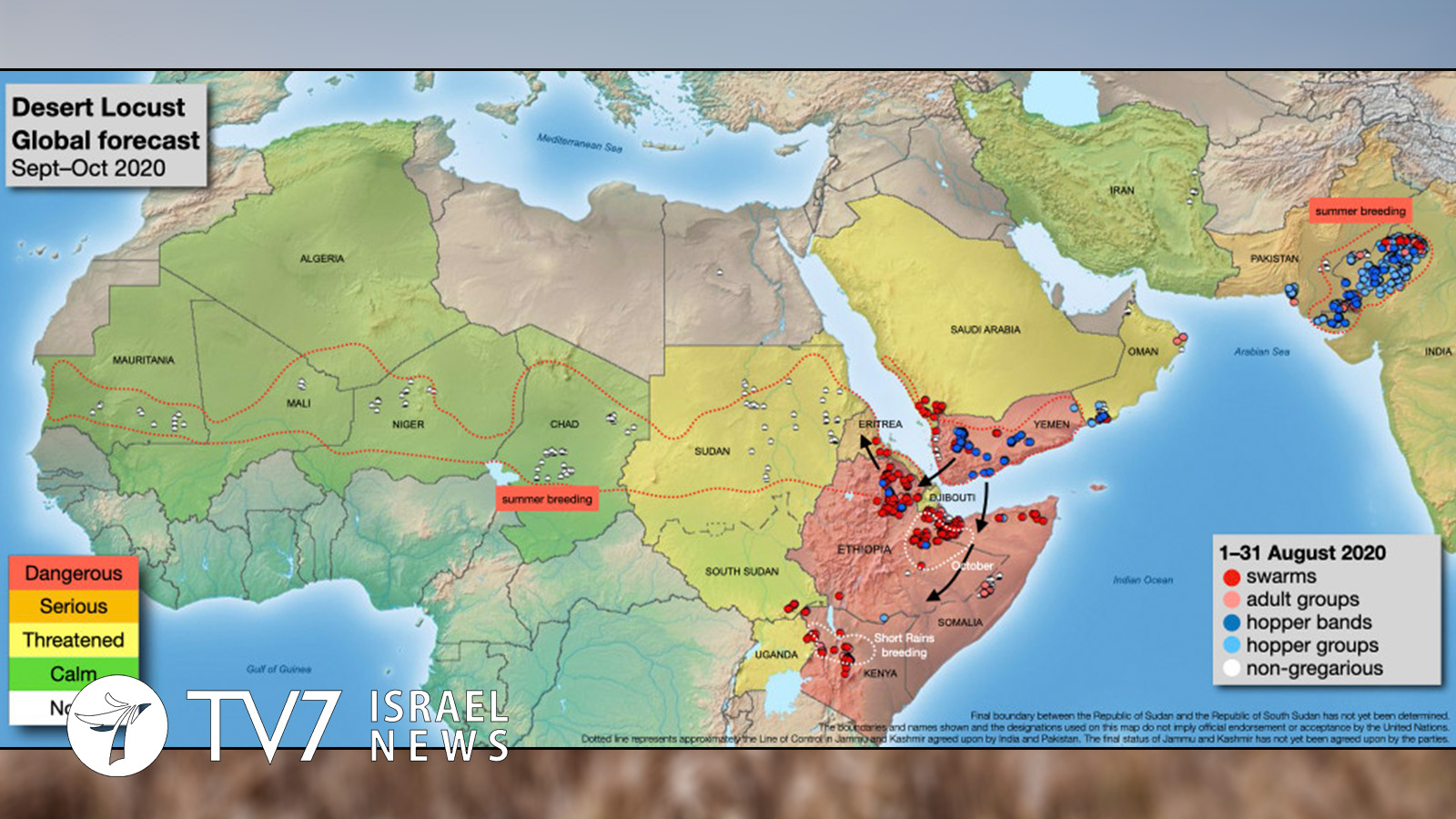The Food and Agriculture Organization of the United Nations (FAO) is reporting that the Desert Locust situation has improved in Southwest Asia but remains serious in Yemen and parts of East Africa.
There is increasing concern that “the situation could deteriorate along both sides of the Red Sea,” according to the most recent update from the Desert Locust Information Service (DLIS).
Widespread and potentially heavy breeding is expected in coastal areas of Yemen and Saudi Arabia, which are situated on the eastern shores of the Red Sea. The same dire forecast has been made in Eritrea where unusually good rains fell last month, in addition to Sudan; both of which lie on the Sea’s western shores (as do Djibouti and Egypt, but neither are facing similar threats). While only these six nations are officially considered to border the Red Sea due to geographical constraints, others are often referred to as “Red Sea territories” due to geological similarities or political links.
The Red Sea is located between Africa and Arabia, atop the Red Sea Rift as part of the wider Great Rift Valley. Lying north of the seawater inlet are the Sinai Peninsula, Gulf of Suez and the Gulf of Aqaba; the latter of which borders Egypt, Jordan, Saudi Arabia – and Israel.
The southernmost city in the Jewish State is the Red Sea resort and popular holiday spot of Eilat. The country has strenuously maintained a high state of vigilance and successfully waged a campaign to counter the devastating pest.
Meanwhile, control operations are in progress on the Red Sea coast in Eritrea, where movements by mature swarms continue to be reported.
Hopper bands have been detected in the interior of Yemen from Al Jawf to Ataq and on the southern Red Sea coast. Mature swarms present in the highlands of Yemen and along the northern coast have migrated into Saudi Arabia. Other mature swarms from Yemen have moved into the Asir Mountains, which lie parallel to the Red Sea in southwestern Saudi Arabia, to Mecca. Control operations remain in progress in both countries.
Aerial control operations in East Africa are also ongoing against low numbers of immature swarms in northwest Kenya and northeast Somalia. Control measures are aimed at eradicating numerous hopper bands and groups that continue to form in north and northeast Ethiopia, wherebreeding is also underway. This scenario is likely to continue through the end of the month.
The FAO notes many successes have been attained.
“Intensive survey and control operations” in India and Pakistan have “improved dramatically” the situation in Southwest Asia, says the DSIL; although limited breeding continues in southeast Sindh and Lasbela west of Karachi in Pakistan.
The situation has also been described as “calm” elsewhere, with “no significant developments” during September. Only low numbers of solitarious adults have been detected in the northern Sahel of Mauritania, Chad and Sudan. Even though breeding has not been registered in these areas so far, there is concern it may again rise due in locations possibly even further north than usual due to recent rainfall. Current operations to assess the situation in Sudan have also been curtailed by flooding.
— By Erin Viner
